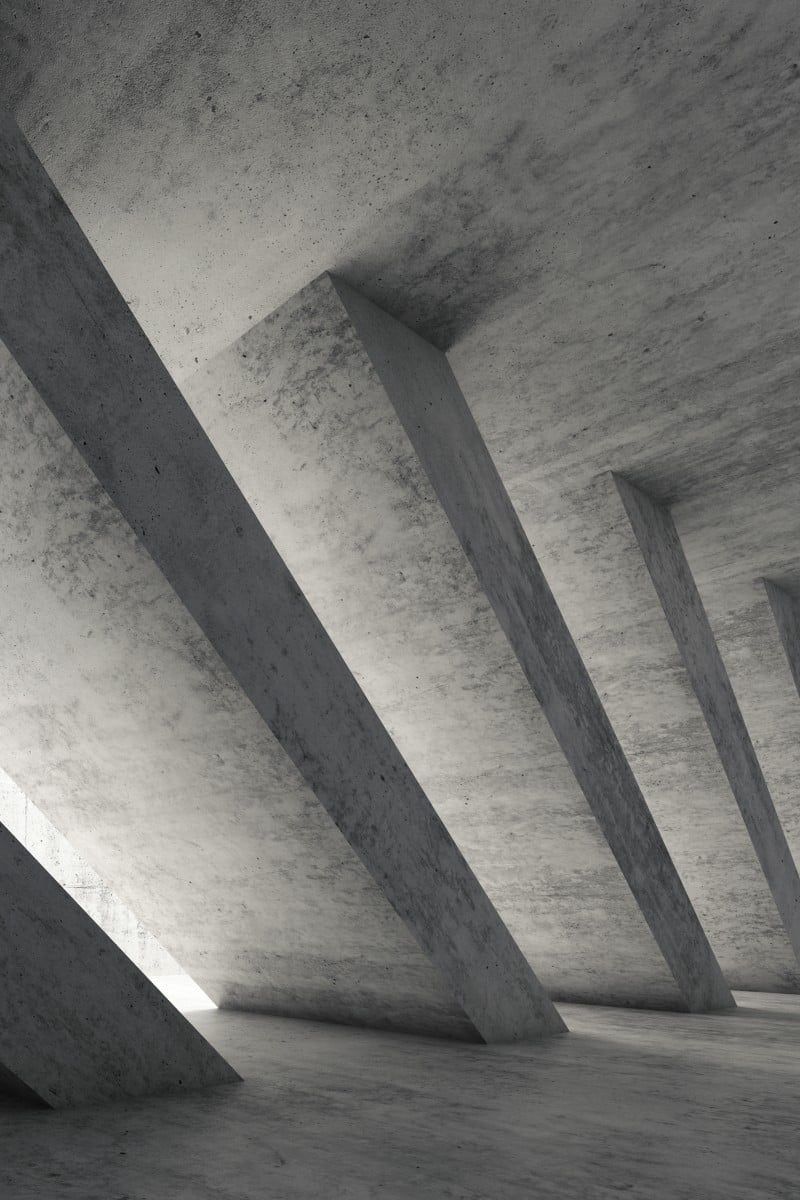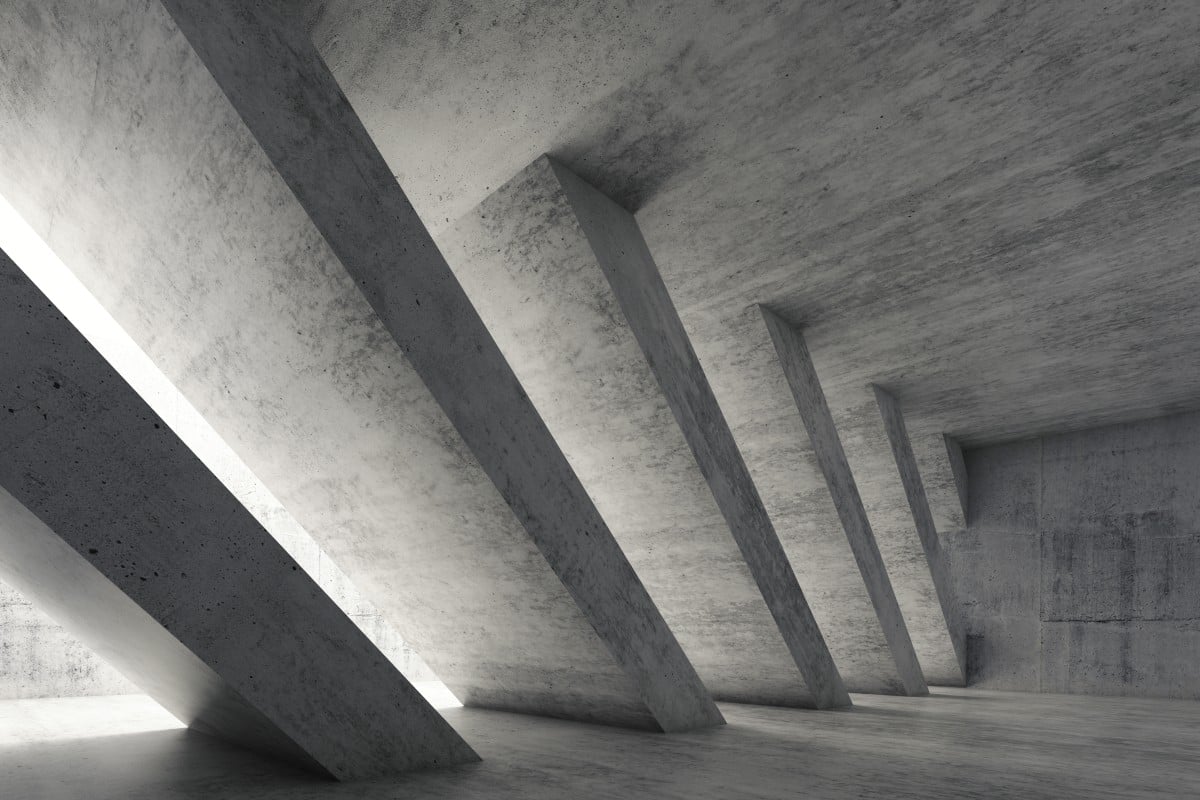
The trouble with concrete: why it seems impossible to conquer

The Pantheon and Colosseum in Rome show how strong concrete is. It is made from sand, small stones, water and clinker, a lime-based binder that has to be baked in very hot ovens. The most widely used cement today is Portland cement which was patented as a form of “artificial stone” in 1824 by Joseph Aspdin in Leeds, Britain. This was later combined with steel rods or mesh, known as rebar, to create reinforced concrete, the basis for skyscrapers such as the Empire State Building.
Rivers of cement it were poured after the second world war, when it offered a cheap and simple way to rebuild cities ruined by bombing. It was used in an ever-growing legion of dams, bridges, ports, city halls, university campuses, shopping centres and uniformly grim car parks. In 1950, cement production was equal to that of steel; in the years since, it has increased 25-fold, more than three times as fast as steel has.
While some people think it is ugly, concrete is seen as a way to make style, size and strength affordable for the masses.
The politics of concrete are less divisive, but more nasty. The main problem here is inertia, an inability to move. Once this material binds politicians, bureaucrats and construction companies together, the resulting core of power is almost impossible to change. Party leaders need the donations and bribes from building firms to get elected, state planners need more projects to maintain economic growth, and construction bosses need more contracts to keep money rolling in, their staff employed and their political influence high. This is why there is a self driving political eagerness for infrastructure projects and cement-fests like the Olympics, the World Cup and international exhibitions, even though they don't seem to make much sense for the host country.
The classic example is Japan, which used concrete in the second half of the 20th century with such enthusiasm that the country’s government was often described as the doken kokka (a construction state).
At first it was a cheap material to rebuild cities damaged by fire bombs and nuclear warheads in the second world war. Then it provided the foundations for a new model of super-rapid economic development: new railway tracks for Shinkansen bullet trains, new bridges and tunnels for elevated expressways, new runways for airports, new stadia for the 1964 Olympics and the Osaka Expo, and new city halls, schools and sports facilities.
This kept the economy racing along at near double-digit growth rates until the late 1980s, ensuring employment remained high and giving the ruling Liberal Democratic party a tight grip on power. The political heavyweights of the era – men such as Kakuei Tanaka, Yasuhiro Nakasone and Noboru Takeshita – were judged by their ability to bring big building projects to their hometowns. Huge kickbacks (bribes) were the norm. Yakuza gangsters, who served as go-betweens and enforcers, also got their cut. Usually when governments want to build projects, they put out tenders, which allow for all companies to give quotes on how much money they will need to do the job. This bidding process should be fair and open to tall. But, bid-rigging and near monopolies by the big six building firms (Shimizu, Taisei, Kajima, Takenaka, Obayashi, Kumagai) ensured contracts were profitable enough to provide big bribes to the politicians. The doken kokka was a racket (corruption) on a national scale.
But there is only so much concrete you can usefully lay without ruining the environment. People began to realise this in the 1990s, when even the most creative politicians struggled to justify the government’s stimulus spending packages. This was a period of very expensive bridges to sparsely inhabited regions, multi-lane roads between tiny rural communities, cementing over the few remaining natural riverbanks, and pouring ever greater volumes of concrete into the sea walls that were supposed to protect 40 per cent of the Japanese coastline.
In his book Dogs and Demons, the author and longtime Japanese resident Alex Kerr complains about the cementing over of riverbanks and hillsides in the name of flood and mudslide prevention. Runaway government-subsidised construction projects, he told an interviewer , “have wreaked untold damage on mountains, rivers, streams, lakes, wetlands, everywhere — and it goes on at a heightened pace. That is the reality of modern Japan, and the numbers are staggering.”
Concrete Part 1: Why it's worse than plastic
He said the amount of concrete laid per square metre in Japan is 30 times the amount in America, and that the volume is almost exactly the same. “So we’re talking about a country the size of California laying the same amount of concrete [as the entire US]. Multiply America’s strip malls and urban sprawl by 30 to get a sense of what’s going on in Japan.”
Traditionalists and environmentalists were horrified – and ignored. The cementation of Japan ran contrary to classic ideas of beauty - ideals of harmony with nature and an appreciation of mujo (impermanence). But Japan lives with the constant danger of earthquakes and tsunamis. Everyone knew the grey banked rivers and shorelines were ugly, but nobody cared as long as they could keep their homes from being flooded.
Which made the devastating 2011 Tohoku earthquake and tsunami all the more shocking. At coastal towns such as Ishinomaki, Kamaishi and Kitakami, huge sea walls that had been built over decades were swamped in minutes. Almost 16,000 people died, a million buildings were destroyed or damaged, town streets were blocked with beached ships and port waters were filled with floating cars. It was a still more alarming story at Fukushima, where the ocean surge engulfed the outer defences of the Fukushima Daiichi nuclear plant and caused a level 7 meltdown.
Briefly, it seemed this might become an enlightening moment for Japan – when the stupidity of humans' self-confidence was exposed by the power of nature. But the concrete supporters were just too strong. The Liberal Democratic party returned to power a year later with a promise to spend 200tn yen (US$1.8 trillion) on public works over the next decade, equivalent to about 40 per cent of Japan’s economic output.
Construction firms were once again ordered to hold back the sea, this time with even taller, thicker barriers. But not everyone thinks they will work. Engineers claim these 12-metre-high walls of concrete will stop or at least slow future tsunamis, but locals have heard such promises before. The area these defences protect is also of lower human worth now the land has been largely depopulated and filled with paddy fields and fish farms. Environmentalists say mangrove forests could provide a far cheaper form of protection. Even elderly locals who have been through many tsunami hate the concrete between them and the ocean.
“It feels like we’re in jail, even though we haven’t done anything bad,” an oyster fisherman, Atsushi Fujita, told Reuters . “We can no longer see the sea,” said the Tokyo-born photographer Tadashi Ono, who took some of the most powerful images of these massive new structures. He described them as an abandonment of Japanese history and culture. “Our richness as a civilisation is because of our contact with the ocean,” he said. “Japan has always lived with the sea, and we were protected by the sea. And now the Japanese government has decided to shut out the sea.”